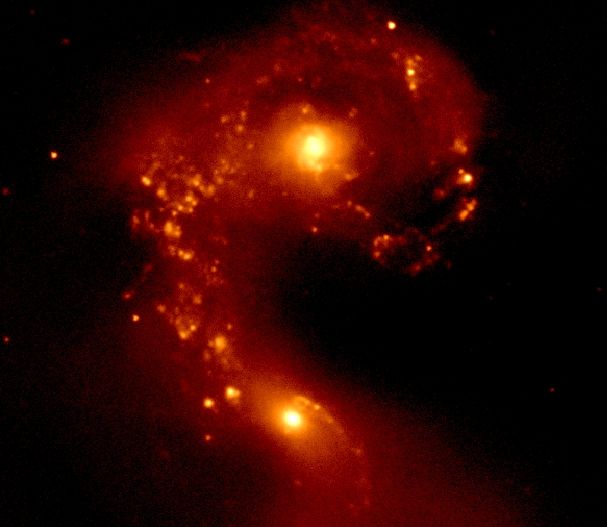Antennae Galaxies in Near Infrared

Credit & Copyright: Bernhard Brandl and the
WIRC team
(Cornell),
Palomar Observatory
Explanation:
What happens when
galaxies collide?
One of the best
studied
examples of the jumble of star clusters,
gas, and dust clouds produced by such a
cosmic train wreck
is the interacting galaxy pair NGC 4038 / NGC 4039,
the Antennae Galaxies, only
sixty million light-years away.
In visible light images, long, luminous tendrils of material seem to
reach out from the
galactic wreckage,
lending the entwined pair an insect-like appearance.
But this penetrating view from the new Wide-field InfraRed Camera
(
WIRC)
attached to the
Palomar Observatory's 200 inch Hale
telescope shows, in false-color,
details of some otherwise hidden features.
The large central nuclei of the two original galaxies dominate
the near-infrared scene speckled with other bright sources
which are themselves giant, newly formed
star clusters.
Remarkably the northern (topmost) nucleus, obscured in optical
images, is also revealed here to have a barred, mini-spiral structure
reminiscent of many "single" spiral galaxies.
Authors & editors:
Robert Nemiroff
(MTU) &
Jerry Bonnell
(USRA)
NASA Web Site Statements, Warnings,
and Disclaimers
NASA Official: Jay Norris.
Specific
rights apply.
A service of:
LHEA at
NASA /
GSFC
& Michigan Tech. U.

